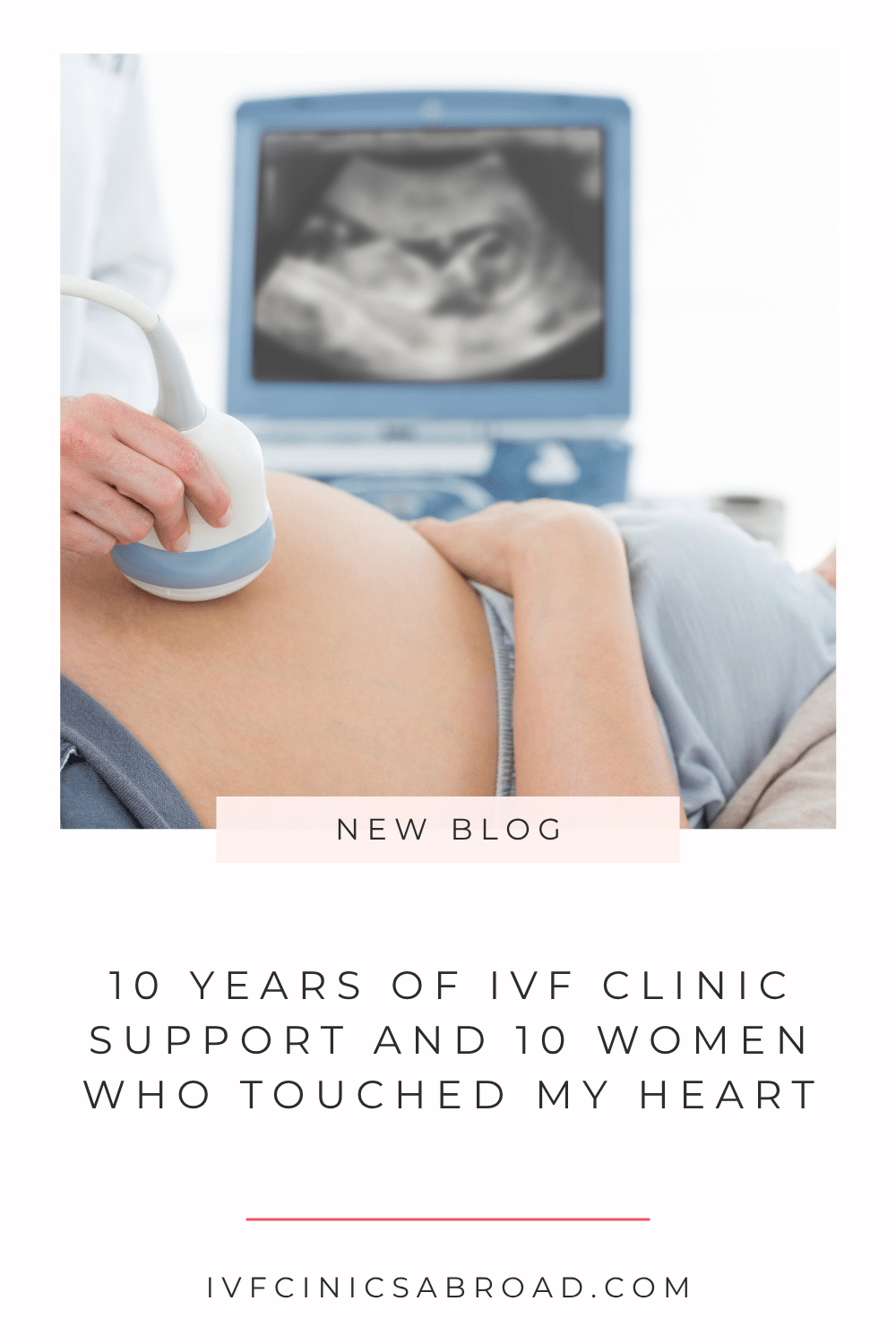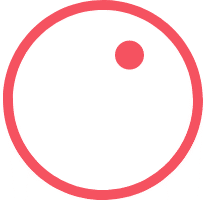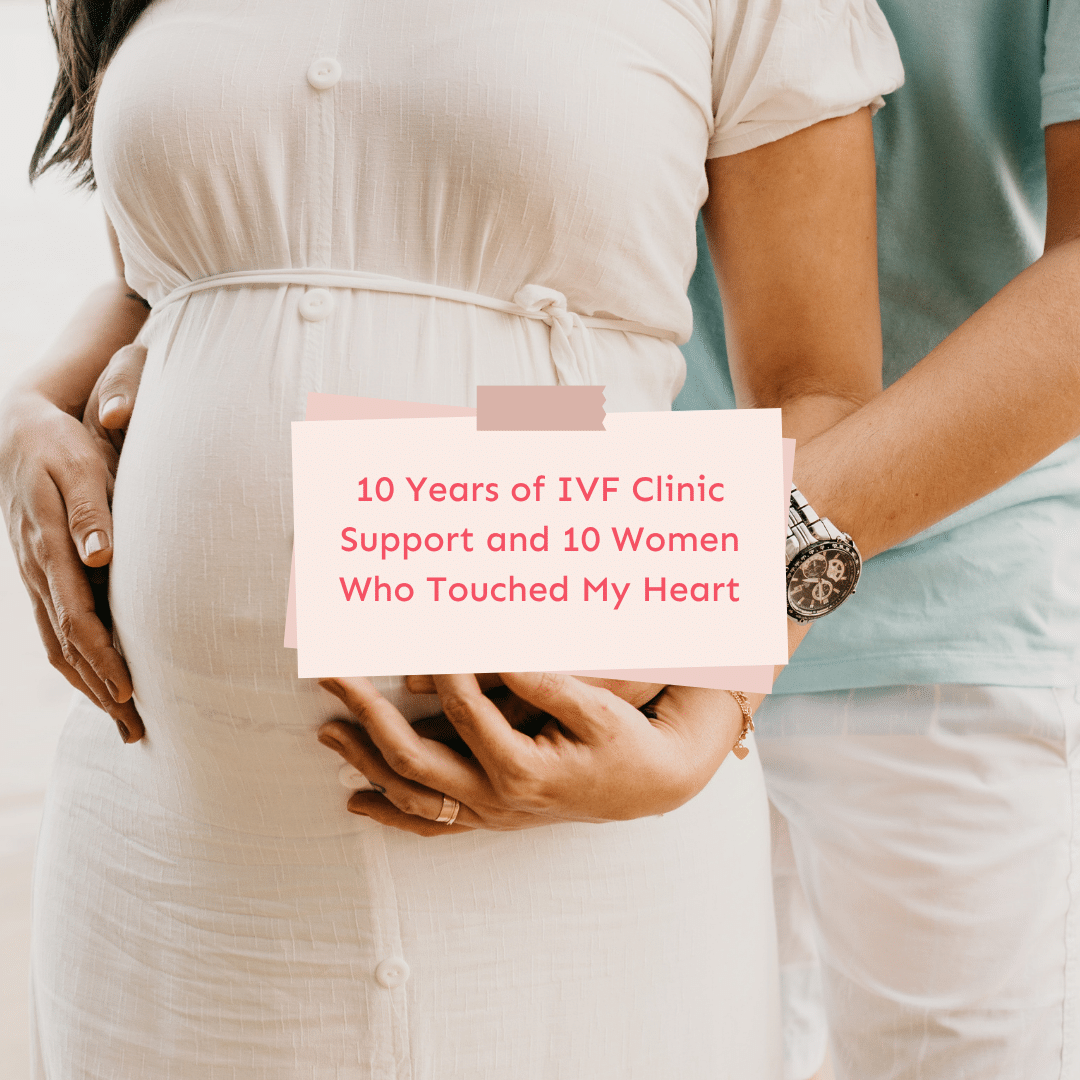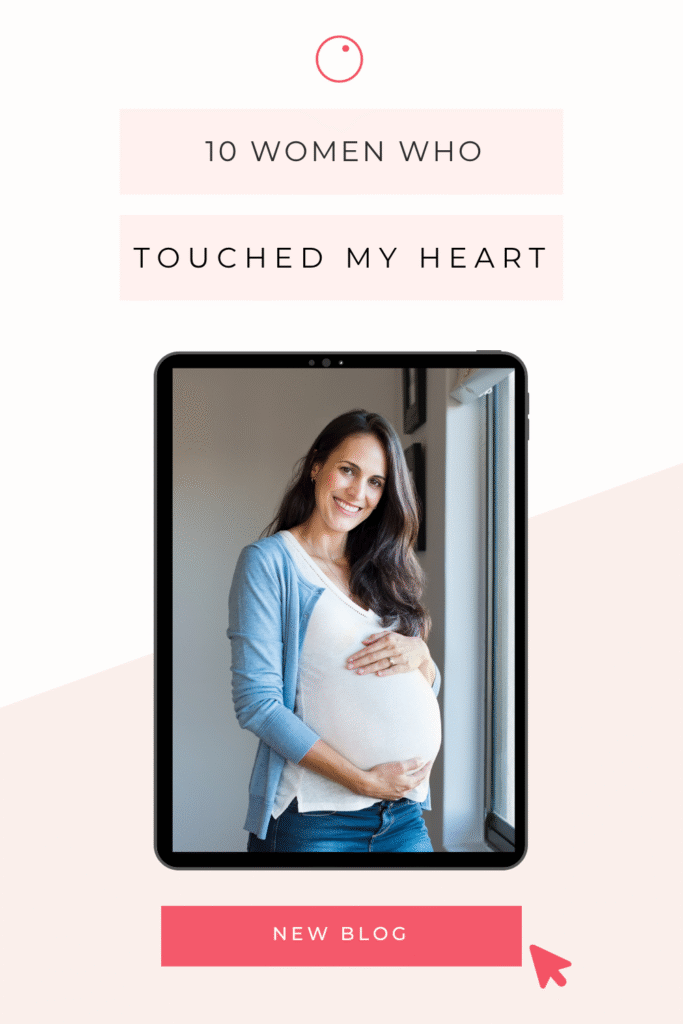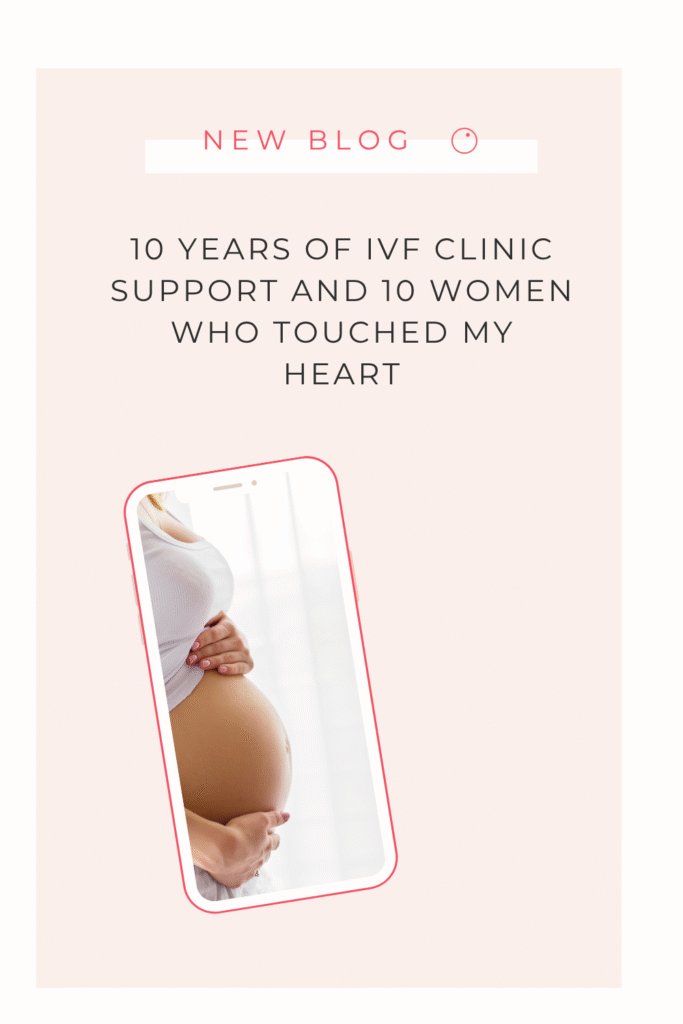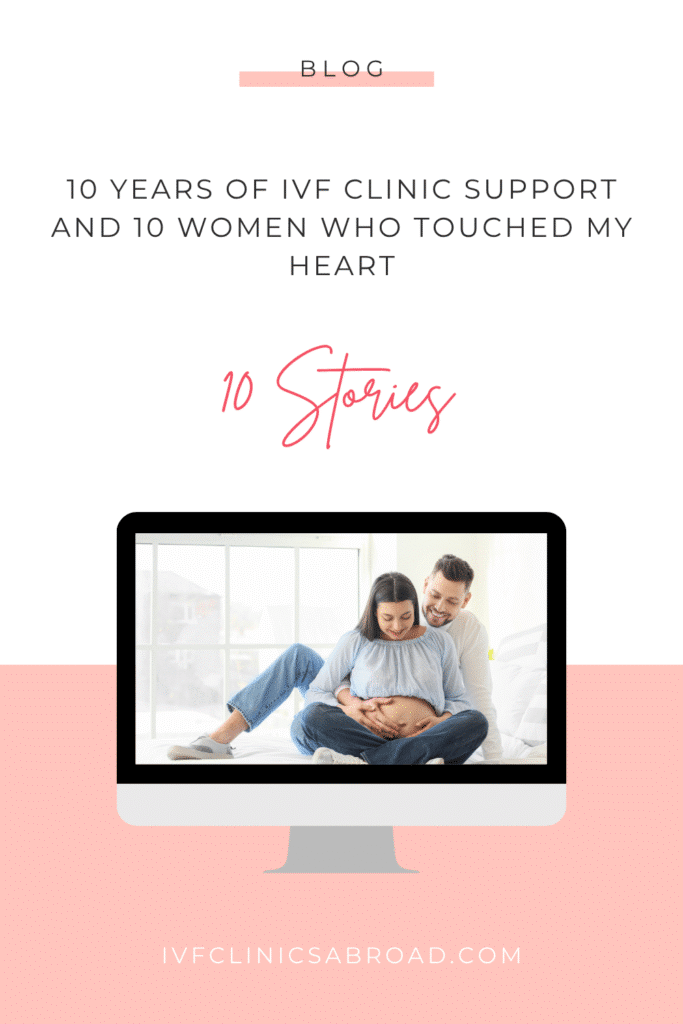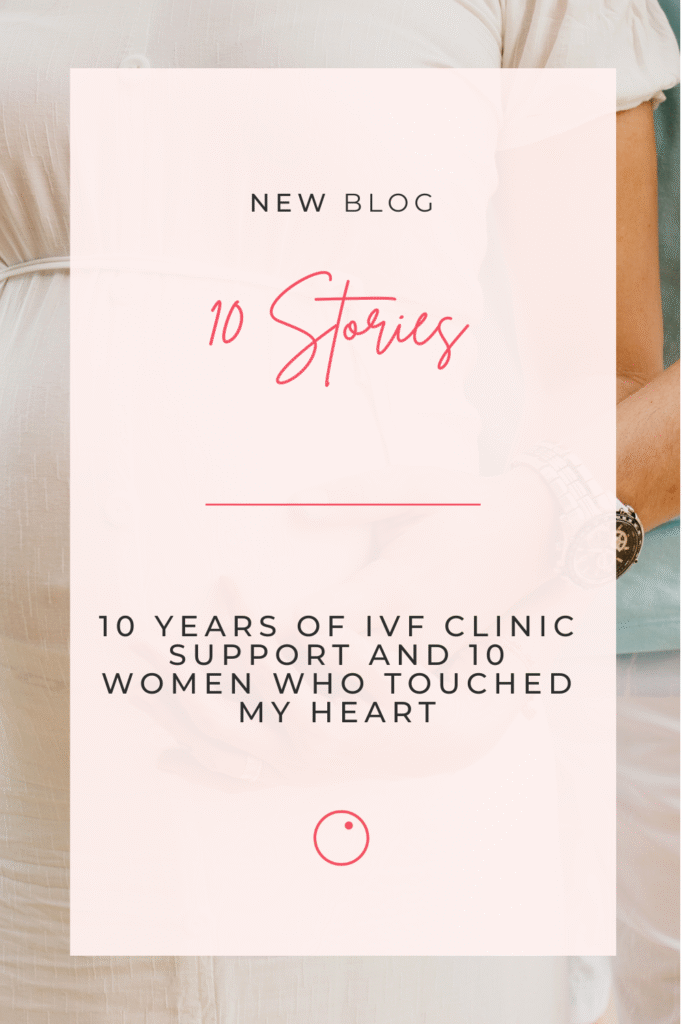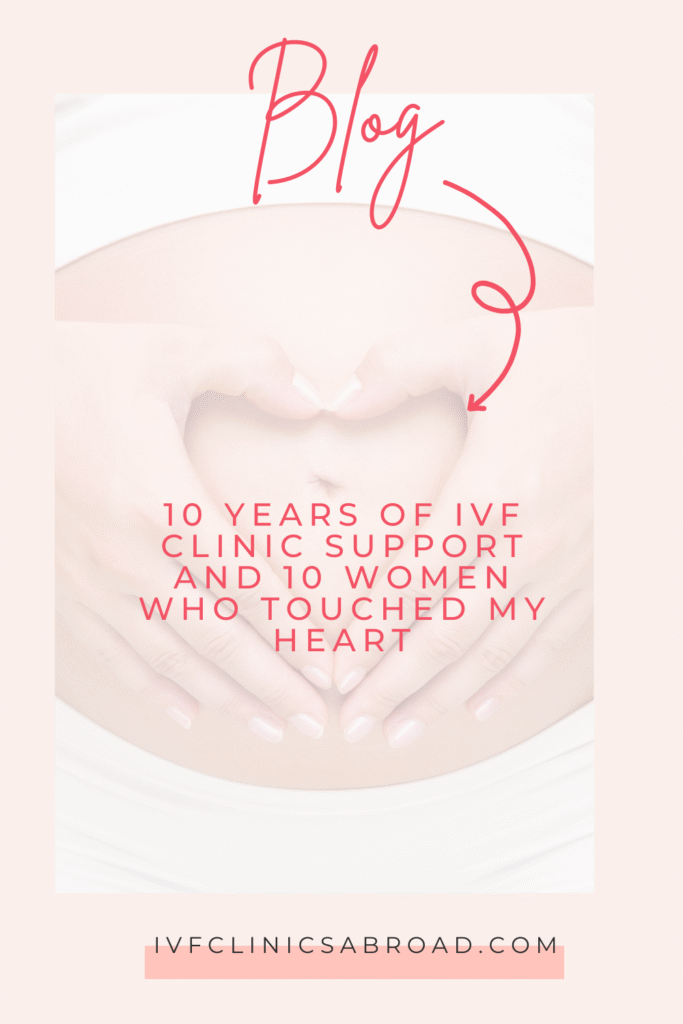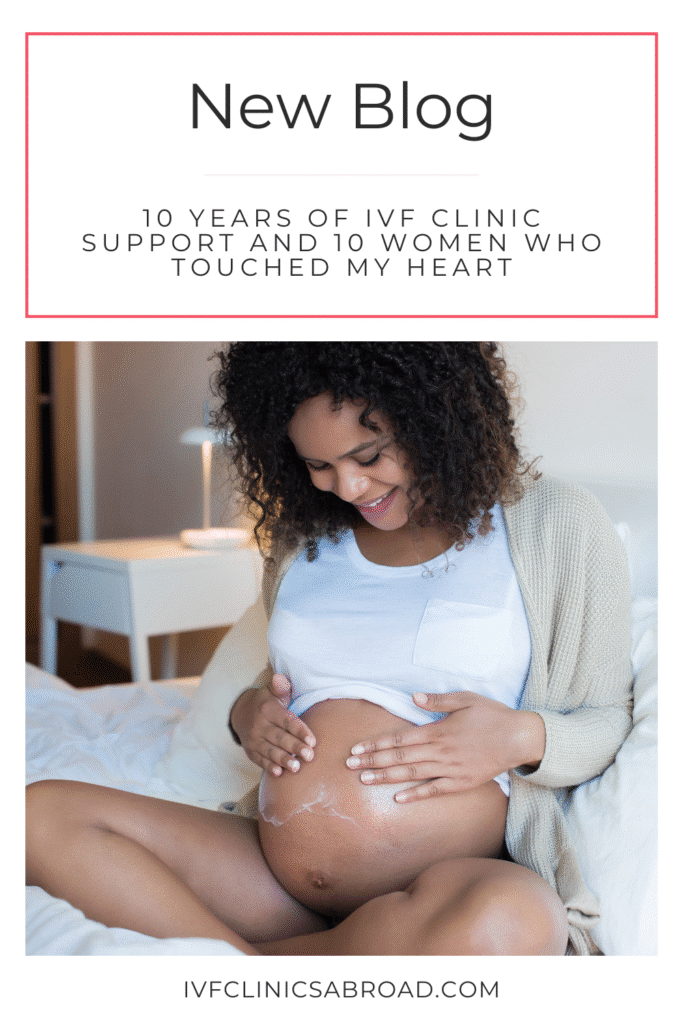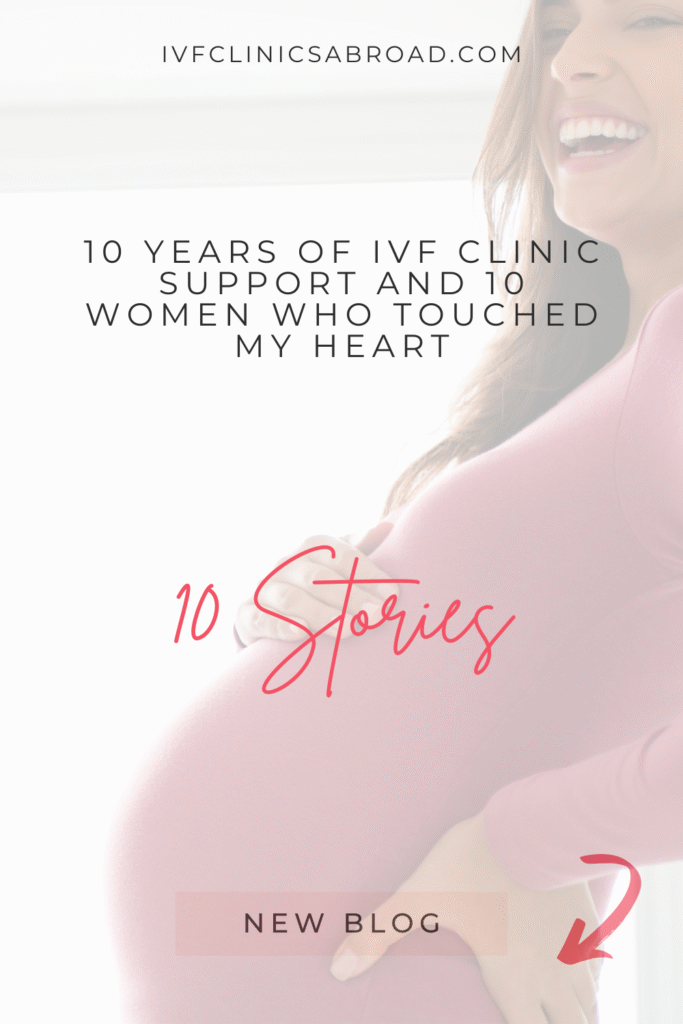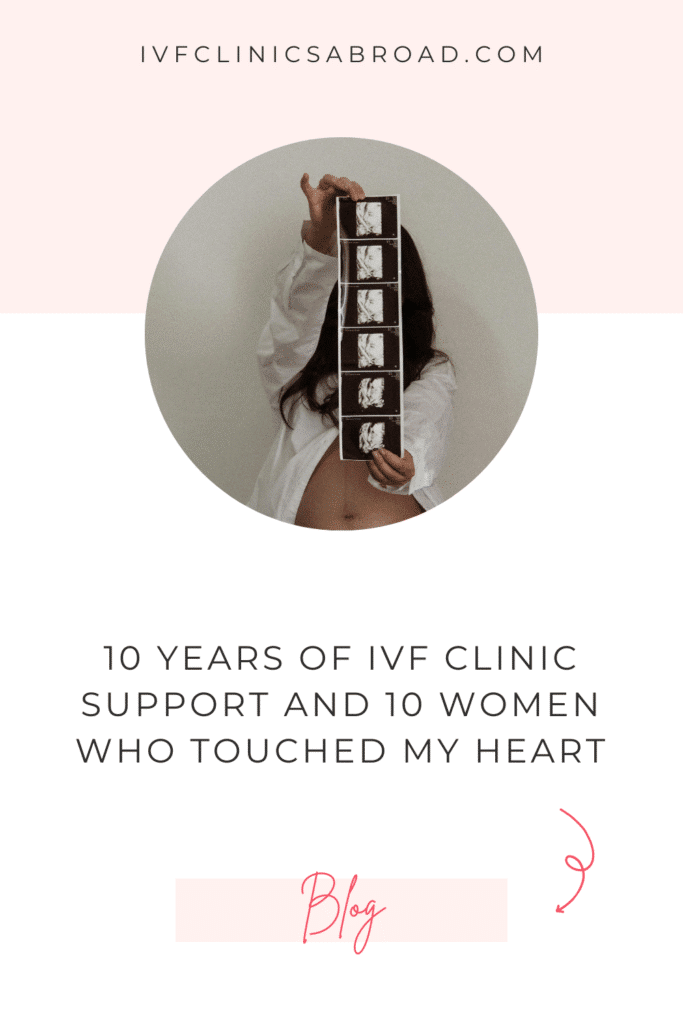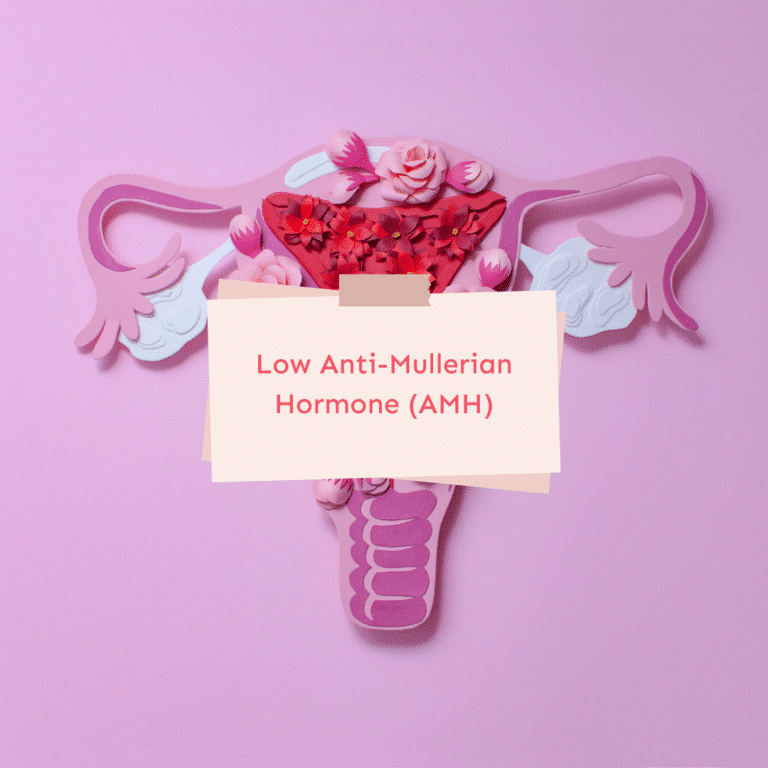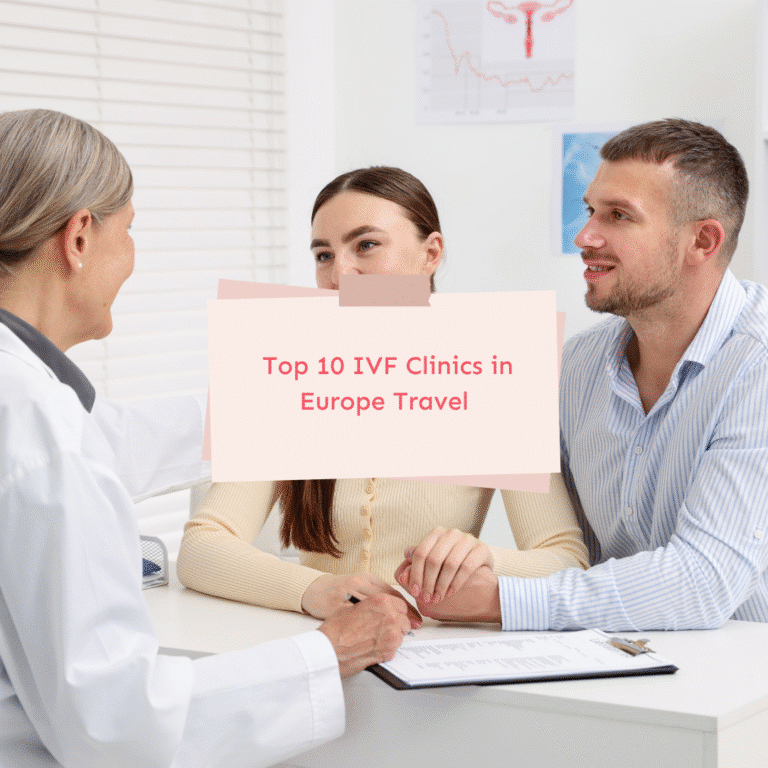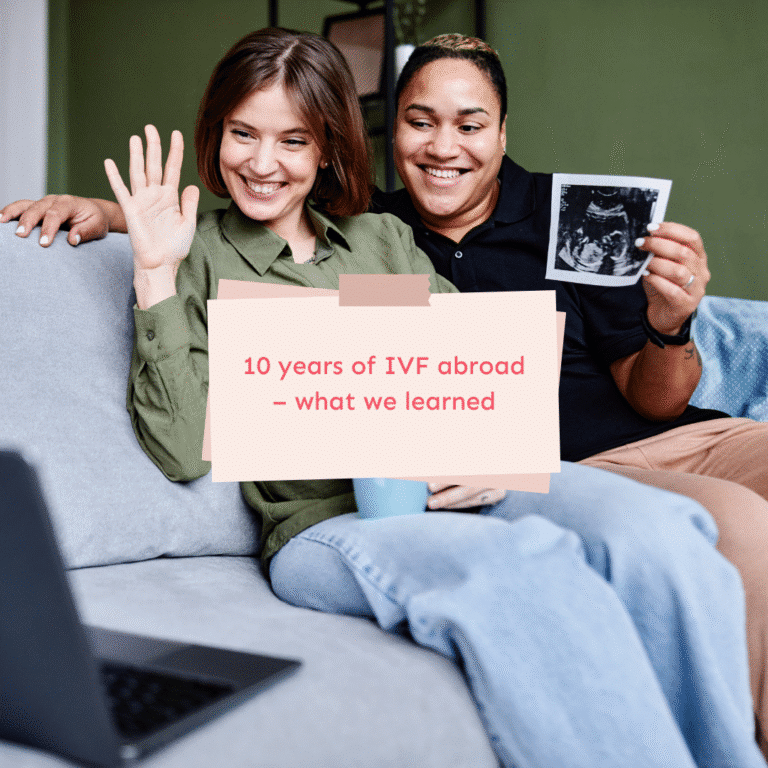10 Years of IVF Clinic Support and 10 Women Who Touched My Heart
It feels almost unreal to look back and realise that it has been ten years since I began helping women find the right IVF clinic support. During these years, I have met so many women struggling with infertility, each with her own hopes, fears and dreams of becoming a mother. Some were single women, others were couples who had been trying to conceive for years, often after many failed IVF attempts or miscarriages.
When I started, I didn’t imagine how deeply these stories would touch me. Behind every embryo transfer, every round of IVF treatment and every pregnancy test there was courage, heartbreak and the desire to finally hold a healthy baby in their arms. Many travelled abroad for fertility treatment, looking for clinics around the world where success rates were higher and patient support felt more personal.
This blog is a tribute to them, to their resilience and trust. Through their journeys, I learned that reproductive medicine is not only about science or assisted reproductive technologies, it is also about compassion, emotional support and never losing hope on the journey to parenthood.
Looking Back at a Decade of IVF Clinic support
When I started guiding women through the world of IVF, there was very little information available. Today, there is more than ever, yet I often feel that it hasn’t become easier. The internet is full of patient stories and fertility clinic reviews, but you never really know which ones you can trust. Some are outdated, others sound too perfect to be true, and many are written by marketing teams rather than real patients.
The women who reached out to me rarely did so because of general fertility problems. Their questions were always about topics that were still considered taboo: egg donation, embryo donation, genetic testing, IVF for single women, treatments over 50, or gender selection. These were women searching for answers that their local fertility specialists could not give them, and that’s why they turned to IVF clinics abroad.
At first, I thought women travelled mainly because IVF abroad was cheaper. But I soon realised that price was never the real reason. They travelled because of the possibilities – the access to reproductive medicine and assisted reproductive technologies that were simply not available in their own countries. After visiting so many clinics myself, I saw how extremely different IVF practices can be, not only in terms of success rates but also in professionalism and patient support.
How Fertility Journeys Shape Parenthood
When I started this work, I thought infertility would mostly affect a small group of women with medical conditions. But over the years, it became clear that fertility problems are increasing everywhere. Women often begin to think about having children later in life, sometimes after 30 or 35, when egg quality naturally declines. At the same time, sperm quality is also falling, and yet this part of the story is rarely talked about.
Infertility is still a taboo subject. Most women prefer to keep it private, even though almost everyone knows someone who has struggled to conceive. Many of them first try everything at home, sometimes for years, before they even consider an IVF clinic abroad. And even then, it’s not an easy step. Local doctors often discourage international treatment, sometimes because of medical concerns, sometimes because they fear losing their own patients.
The result is confusion. There is too much information online, but very little you can truly trust. Women search for real stories, honest experiences and transparency, but often end up feeling even more lost. Fertility journeys are deeply emotional, and yet, what women need most is not more promises, but clarity, honesty and options that really exist.
Lessons Learned From IVF Success and Struggles
After so many years of seeing different clinics and listening to hundreds of stories, I realised how complex this field has become. Many women over 40 still believe they can easily get pregnant, especially when they read about celebrities having babies later in life. Others follow fertility coaches who offer alternative methods and emotional guidance, but sometimes give unrealistic expectations. Hope is beautiful, but when it replaces facts, it can also hurt.
IVF clinics are very different. Some are honest and transparent, others are focused on their success rates and may suggest egg donation too quickly, simply because it increases their statistics. I have also seen the growing number of IVF add-ons – new technologies that sound promising but are not yet scientifically proven. Many women pay for these options without knowing whether they really help. In my opinion, there should be clearer rules, more transparency and better communication, so women can make informed choices.
Still, reproductive medicine is moving forward, and there are reasons to be hopeful. Success rates have improved, and modern technology is evolving at an incredible pace. Artificial intelligence now helps embryologists select quality embryos and improve IVF outcomes in ways we could not imagine ten years ago. What hasn’t changed, however, is how private this topic remains. Women want to hear other women’s experiences, yet few are willing to speak openly. This silence is perhaps the hardest part of all, because sharing helps others feel less alone.
10 Stories That Touched My Heart
The Swedish Woman Who Found Hope Abroad
I still remember the day I met her, a Swedish woman living in Zurich. She had already spent more than 100,000 francs on fertility treatment in Switzerland. Every doctor gave her new hope, every IVF cycle promised to be the one, yet nothing ever worked. Years of infertility had left her tired and emotionally drained.
By the time we spoke, she had used up all her savings and could no longer afford another round of treatment. She felt she had reached the end of her options. After listening to her story, I suggested something that might give her one last chance – embryo adoption abroad.
When she finally travelled to the Czech Republic, the doctors there told her something that no one had ever said before: it would no longer be possible with her own eggs and sperm. It was a painful truth, but also the beginning of a new chapter. She decided to go ahead with the embryo adoption, a treatment that cost only around 1,300 euros at that time – today it costs more – and she became pregnant immediately.
I met her later at a fertility fair where I was giving a talk. She came to thank me in person, her eyes full of relief and disbelief that it had finally worked. She told me that she still needed emotional support and was not ready to share her story publicly, but I could see how much strength it had taken to get there. For her, motherhood came not from endless treatments, but from finally hearing the truth and being given a real chance.
The First Swiss Mother Over 50
She was the first woman over 50 who ever contacted me. A single woman from Switzerland, full of determination, but also exhaustion. She had already tried several IVF treatments in Spain and suffered multiple miscarriages. When she told me her story, I wasn’t sure what to say. I had heard so many times that it was impossible to become a mother after 50, and perhaps a part of me believed it too.
But she was not ready to give up. She told me that she had always wanted to be a mother, even if it meant doing it alone. She worked as a cleaner, so money was always tight, yet her motivation never came from money – it came from love. When she finally travelled abroad for treatment, she became pregnant and gave birth to a healthy baby.
When she called me after the birth, I could hardly believe it. Since then, we have stayed in touch, and I still see her almost every year at her daughter’s birthday party. But her story is not just a fairytale. During her pregnancy, she lost her job and had to manage everything alone. Despite all of that, she never complained. She faced each challenge with quiet strength and grace.
I often think of her when I speak to other women who doubt whether it is still possible to become a mother later in life. She reminds me that courage sometimes matters more than statistics, and that motherhood can take many different forms.
Finding Confidence in Northern Cyprus
Let’s call her Anna. She was another woman over 50 who joined almost all my webinars. She asked many questions, again and again, but never took action. One day, during a live session, I gently told her that it was time to finally go. Sometimes, you just need to see things with your own eyes.
In Northern Cyprus, where IVF treatment for women over 50 is still possible, everything is organised in a very efficient way. All medical tests can be done in a single day – blood work, hormone levels, an internist consultation, mammogram, and even a psychological evaluation if required. The costs are much lower than in most European countries, and the entire process is handled with discretion and professionalism.
I encouraged her to travel there without pressure, simply to experience the island, visit the clinic, and talk to the doctors. She could always decide later whether she wanted to continue. But once she arrived, everything fell into place. The clinic made her feel safe and respected, and she started the process right away.
She became pregnant after her first IVF cycle and later gave birth to a healthy baby girl. Her pregnancy was uncomplicated, and the delivery went smoothly. Some months later, she spoke during one of my webinars, sharing her experience and encouraging other women to take that first step. I met her again at a fertility fair, this time asking about the possibility of a second child. Both the clinic and I advised against it, but her happiness was undeniable.
Her story shows that sometimes hesitation is just fear disguised as caution. Once she allowed herself to act, everything she had hoped for became possible.
A Ballet Dancer’s IVF Journey to Motherhood
Sofia was a professional ballet dancer from Switzerland, single and determined, yet deeply tired from disappointment. She had travelled to Denmark several times for treatment because single women are allowed to use sperm donation there. She thought that was her only option.
What many women don’t know is that donor sperm from Denmark is shipped to fertility clinics in many European countries, although not all of them allow single motherhood. Few also realise that preimplantation genetic testing is not permitted in Denmark, which means that many women conceive there but later experience miscarriages or give birth to children with chromosomal abnormalities.
By the time Sofia contacted me, she was already over 40 and emotionally exhausted. I suggested she consider IVF with genetic testing to reduce the risk of miscarriage. Her AMH was still good for her age, and during the first IVF cycle, she produced more than ten eggs. Out of those, only one embryo was genetically normal.
Sofia decided to continue her treatment in Spain, where she received an anonymous and local sperm donation. She wanted to transfer that one healthy embryo immediately, but I advised her to do another cycle first, to build a small embryo bank. We stayed in contact during her treatment, and to my relief, it worked straight away.
She became a happy mother. Her story confirmed once again that genetic testing can shorten the IVF process, help prevent unwanted miscarriages and spare women a great deal of emotional pain. Sometimes, science really can make the journey easier and faster.
“Ten stories, one truth: when women support each other, hope becomes real.”
Nathalie Wiederkehr
A Second Chance Through Embryo Donation
Rebecca already had a child from a previous relationship and a new partner who didn’t want any more children. Still, her wish for a sibling never disappeared. Secondary infertility can be just as painful as never having conceived at all, and many women underestimate how strong that longing can be.
When she was treated in Spain, she received an embryo adoption but didn’t really understand the difference between adoption and donation. In an adoption, you usually receive only one embryo, often not of the highest quality, while in a donation you receive all embryos created from one egg donor and one sperm donor, which belong exclusively to you.
I suggested she try an embryo donation in Northern Cyprus, where treatments are more affordable and the process is handled with great care and discretion. She was nervous at first, unsure about travelling so far alone, but she decided to go.
Weeks later, she sent me a long message, full of surprise and relief. She couldn’t believe how professional, kind and transparent the clinic was, and how different everything felt compared to her experience in Spain. She told me with real conviction that I should talk more openly about Northern Cyprus, because women needed to know how good the experience could be there.
We follow each other on social media, and our exchanges are always friendly and full of joy. From her, I learned something important – that you have to hold on to your dreams, even if your partner doesn’t share them, and believe that you can make them happen on your own. Still, it’s important not to choose a clinic just because it seems cheaper. Lower prices can sometimes mean lower standards, and that’s never worth the risk when your goal is a healthy pregnancy.
When Life Surprises You With Natural Conception
Céline was in her early forties when she contacted me. Her AMH levels were very low, and every doctor she spoke to advised her to consider embryo donation instead of trying with her own eggs. I gave her the same recommendation, because medically, it was the most realistic option.
She decided to go ahead with the embryo donation and had the embryos frozen while she took some time to think about the next steps. Then, life took an unexpected turn. She met someone new, fell in love, and they decided to build a family together. Céline told him that she couldn’t have children naturally and asked if he would be willing to donate his sperm for treatment. He agreed immediately. But before any treatment even started, she became pregnant – completely naturally.
To everyone’s surprise, it worked. She gave birth to a healthy child. People often say that pregnancy happens when you “relax” or “stop thinking about it”, but in my opinion, that’s simply not true. In her case, it was timing, good sperm quality and a bit of luck.
Her story is special because it reminds us that nature sometimes surprises us, even when we no longer expect it. Still, it’s important to stay realistic. After 40, the chances of conceiving naturally are small, and that’s why embryo or egg donation can be such a valuable option. But Céline’s story shows that life doesn’t always follow medical logic – and that joy sometimes arrives exactly when you stop waiting for it.
The Long Road to IVF Success in the Czech Republic
Fabienne came from Berlin and had been trying to become a mother for many years. When we first spoke, I could feel how much she had already been through. She had tried almost everything, several IVF treatments in Germany, natural cycles, immune therapy and a long list of fertility add-ons. She had even applied for genetic testing in Germany, but the authorities refused to approve it.
When she contacted me, I recommended my favourite clinic in the Czech Republic, one that has an excellent reputation for its laboratory. They have their own lab, highly skilled specialists and modern technology, and are well known for their professionalism and precision.
The process was long and demanding, but the clinic took her seriously and ran every possible test. I stayed in contact with her throughout, and after so many years of infertility, she finally became pregnant. Today she is a mother, and even though the road was incredibly hard, she told me that she would do it all again for the same result.
She also said something that stayed with me. She realised that while emotional balance and holistic methods can support the process, they cannot replace proper medical care. IVF is complex, and sometimes success depends on advanced diagnostics, lab work and precise timing. Her story is a reminder that it takes both, heart and science, to make dreams of motherhood come true.
When Low BMI Meets High Determination
Joséphine was from Switzerland, petite, healthy and full of energy, but she had been trying to get pregnant for years without success. She had seen several doctors in Switzerland, gone through various treatments, but no one ever mentioned egg donation to her. In Switzerland, egg donation is still prohibited, and many women simply don’t know that this option even exists abroad.
When she contacted me, we discussed her situation carefully. Because of her age and long history of failed treatments, I suggested egg donation, as it offered her the best chance of success. She decided to go ahead and travelled abroad for treatment. Everything went smoothly, and she became pregnant right after the first attempt.
She joined many of my webinars afterwards and became active in online forums, helping other women who were considering going abroad. She encouraged them to be brave, to ask questions and to trust the process. I admired that about her – how she turned her own experience into something positive for others.
Last Christmas, she gave me a small box of homemade pralines. Her story is a reminder that even when the local laws limit what doctors can offer, there are often safe and legal solutions abroad that can make motherhood possible.
The Woman Who Discovered Egg Donation at 45
Carla was 45 when we first spoke. She was a neighbour, and one day, during a casual conversation, we somehow started talking about pregnancy and miscarriages. She told me about her own loss, a stillbirth that had marked her deeply, and said that she had long given up on the idea of becoming a mother again.
I told her about my work and explained that there were still possibilities for women her age, such as egg donation abroad. She looked at me with disbelief and said she had never heard of it before. Like many women in Switzerland, she thought her only option was to accept infertility, because no one had ever mentioned these alternatives to her.
Once I explained how the process worked, she became curious and wanted to know more. She decided to contact a clinic abroad and took the step with quiet determination. She trusted the process, even though it meant travelling alone and stepping far outside her comfort zone.
What touched me most was what happened afterwards. Her entire family supported her decision, both emotionally and financially, something she had never expected. Even her partner, who had once said he didn’t want any more children, stood by her side. Their support gave her the courage to go through with it.
Today she is pregnant, and her joy is contagious. Her story shows how powerful it can be when women receive the right information at the right time. And it also reminds us how important it is to talk more openly about these possibilities, so that other women can find the hope and support they need.
The Dream of Gender Selection Fulfilled
Sandra contacted me when she had already made her decision. She had found a clinic in the United States that offered gender selection and had started her treatment there. For her, it was not only about becoming a mother, but about fulfilling a lifelong dream of having a daughter.
Even though she didn’t need my help with the organisation, we stayed in touch. She told me about the process, how different it was compared to Europe, and how much more expensive it had been. In the end, she was happy with her choice, but she also understood why so many women look for more accessible options in other countries.
What I appreciated most was her openness. She later joined one of my webinars to answer questions from other women who were curious about gender selection. It was not easy for her to speak publicly about such a sensitive topic, but she wanted to help others understand what it really means to go through it.
There are still many misconceptions about gender selection, and many women feel judged for even thinking about it. Sandra showed how important it is to speak honestly and without shame about these topics. We need more women like her, who dare to share their stories and help others make informed decisions.
A Decade of Parenthood, Hope and Connection
Looking back over ten years of IVF stories, I sometimes still find it hard to believe how much I’ve seen and learned, and yet there is always more to learn. Every woman I’ve met has her own story, her own background, her own dreams. Each journey is unique, and that’s how it should be treated. What matters most is listening carefully, understanding individual needs and offering help without judgement.
I’m still amazed by how simple and successful egg donation can be when done properly, and at the same time, how many women wait too long, hoping that things might still work naturally. Too many hesitate, not because they don’t want help, but because they don’t know where to start or because they’re afraid to talk about it.
It makes me sad that infertility and assisted reproduction are still such taboo topics. I am also sad that at home, women often receive too little support and information. Doctors are often under time pressure, consultations are short, and many women leave their appointments with more questions than answers. They feel dismissed instead of guided, and that’s when confusion and frustration begin.
The rules and laws also differ from country to country, and that makes everything even more confusing. But no matter where a woman lives, one thing never changes, the importance of believing in her dream and knowing that there are safe, legal and compassionate options available.
Supporting Other Women on Their Fertility Journey
Over the years, I’ve met hundreds of women who thought they were completely alone in their situation. They didn’t know who to talk to, or where to get honest information that wasn’t influenced by marketing or false promises. Many were already exhausted when they found me, and all they wanted was someone who could explain their options clearly and without judgement.
That’s why I started organising webinars and writing about these topics. It was never about giving medical advice, but about helping women understand what’s possible and where they can find trustworthy clinics. When women begin to share their stories and exchange experiences, something changes. The shame and silence slowly disappear, and a sense of community begins to grow.
Some of the women I supported years ago now help others by telling their own stories, joining online discussions or even speaking publicly about their journeys. That gives me hope, because the more openly we talk about these topics, the easier it becomes for others to take that first step.
Helping women navigate the world of IVF has taught me that information is power, but empathy is what truly makes a difference. Every woman deserves to feel seen, heard and supported, especially when facing one of the most emotional decisions of her life.
Finding the Right Fertility Clinic and Guidance
Finding the right fertility clinic is not about choosing the one with the most beautiful website or the highest numbers. It’s about finding a place where you feel respected, informed and treated as an individual. Every woman has different needs, and every clinic has its own philosophy. What matters most is transparency, communication and trust.
I’ve learned that good guidance can make all the difference. When you understand what options are realistic, what success rates actually mean and what each treatment involves, the whole process becomes less frightening and far more manageable. It’s not about convincing anyone to start treatment, but about helping women make decisions with confidence and clarity.
After ten years of listening to women from all over the world, I know how much courage it takes to even start looking for help. If you’re in that place now, take your time, ask questions, and never let anyone rush you. The right clinic and the right team will support you, not pressure you.
If you’d like to understand the differences between countries, laws and treatment options, I’ve created a free guide about IVF destinations in Europe. It explains in which countries different treatments are available, such as anonymous or open egg donation, embryo donation, IVF over 50 or gender selection, with average prices and success rates from Northern Cyprus to give you a clear starting point. You can download it below, or reach out for private support if you’d prefer to talk through your situation personally.
